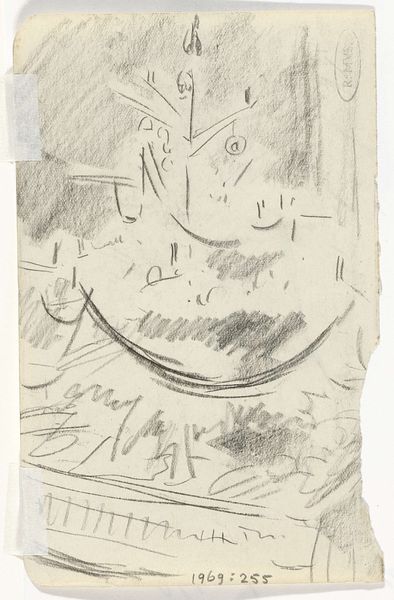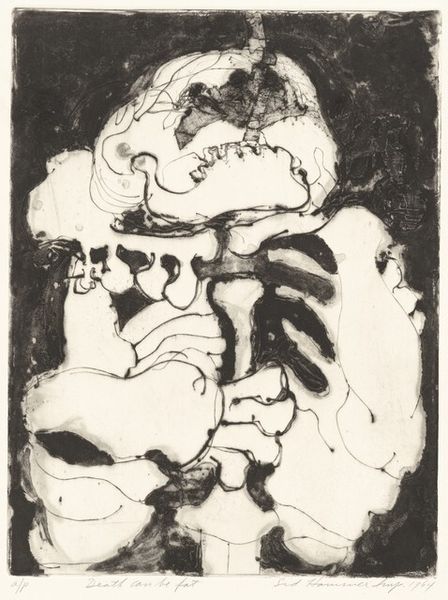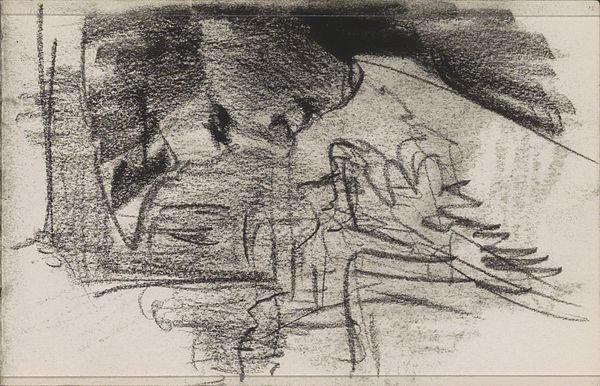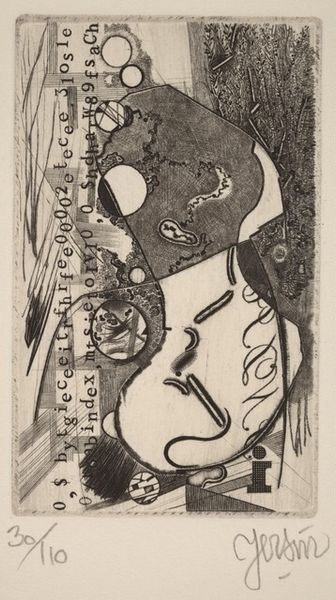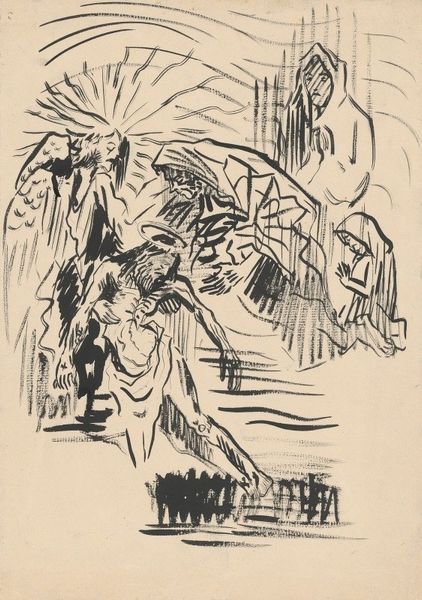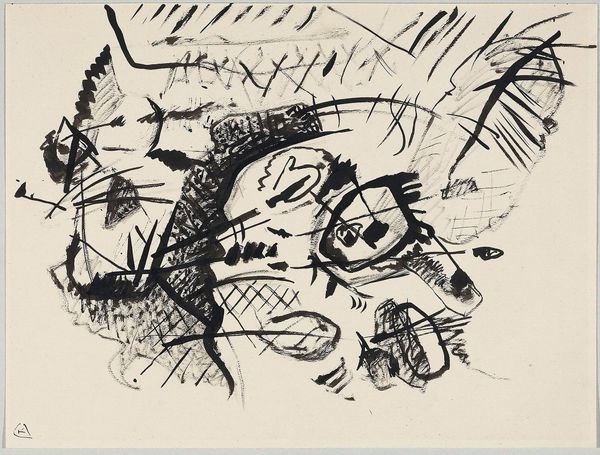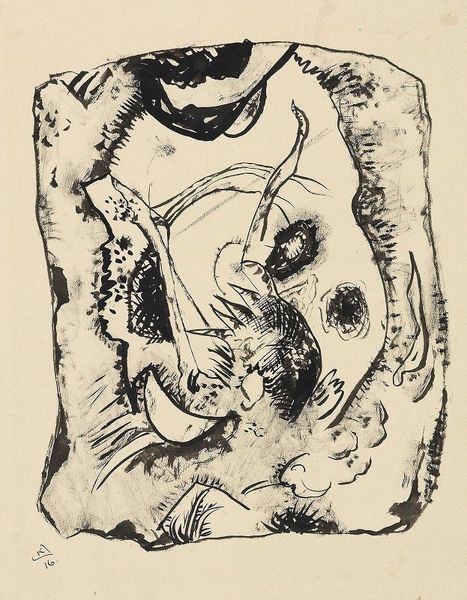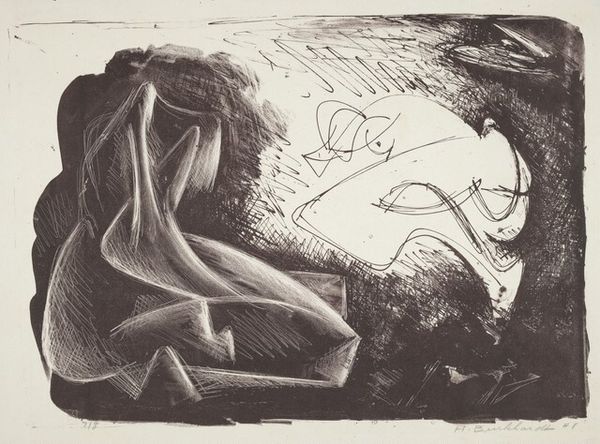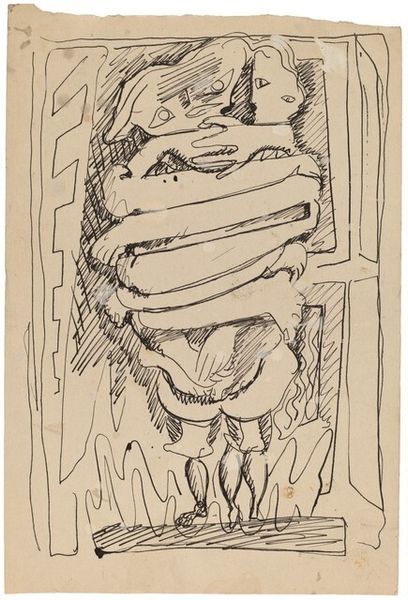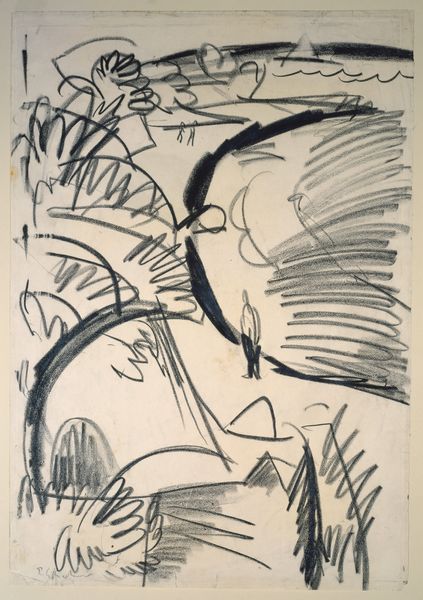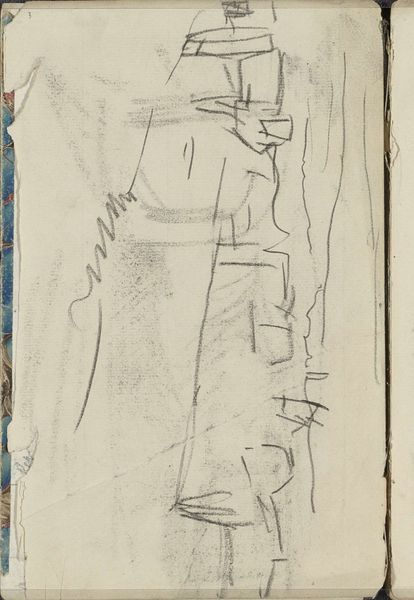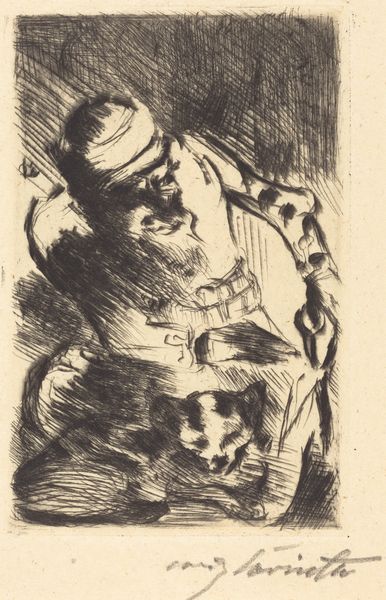
graphic-art, print
#
graphic-art
# print
#
figuration
#
line
Copyright: National Gallery of Art: CC0 1.0
Curator: At first glance, there's a rawness to it, an intensity. The stark blacks and whites feel incredibly unsettling. Editor: This is Imre Reiner’s 1964 graphic print, "Euripides/Medea." Reiner, of course, was a significant figure in 20th-century graphic arts and typography. The print reflects his enduring interest in classical themes interpreted through modern artistic techniques. Curator: "Unsettling" is the word. Look at the almost violent energy of the lines. The figure looks fragmented. The emotional weight feels tied to something ancient and brutal. Editor: The iconography here is key. Consider Medea, the ultimate betrayed woman, avenging herself in the most horrific way, and what she represents in Western consciousness. The piece captures that monstrous, wronged feminine figure. The disfigurement perhaps hints at that broken, monstrous image society casts on a mother who commits the ultimate taboo. Curator: Do you think the artist’s choice of a printmaking process, especially with such raw linework, speaks to this in any way? Mass production, the grotesque made widely available. Is it social commentary? Editor: Definitely. Reiner's process makes Medea almost archetypal, less a specific woman and more a stand-in for destructive emotions and broken societal bonds. The story resonates in our culture, in debates about women and power. The print medium underscores its timelessness, reminding us of its ongoing impact and presence. Curator: There is such a power in the fragmentation. Rather than diminishing, it makes the tragic elements more apparent, more imposing. Editor: Absolutely. By delving into her cultural history through the power of visual symbols, we gain a fresh appreciation of Medea and perhaps even glimpse into the psychology that drives such acts of desperation and, indeed, defiance. Curator: Reflecting on this work I am struck by how an artist, through deliberate visual choices, can evoke so much of a shared cultural understanding with sparse imagery. Editor: Yes, it serves as a grim, yet beautiful reminder of how the tragedies of the past echo even in the present, through visual art and cultural memory.
Comments
No comments
Be the first to comment and join the conversation on the ultimate creative platform.
